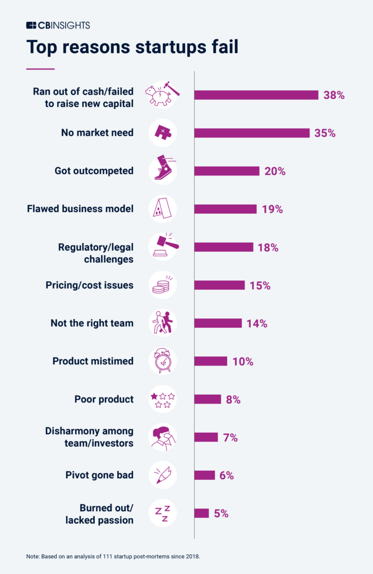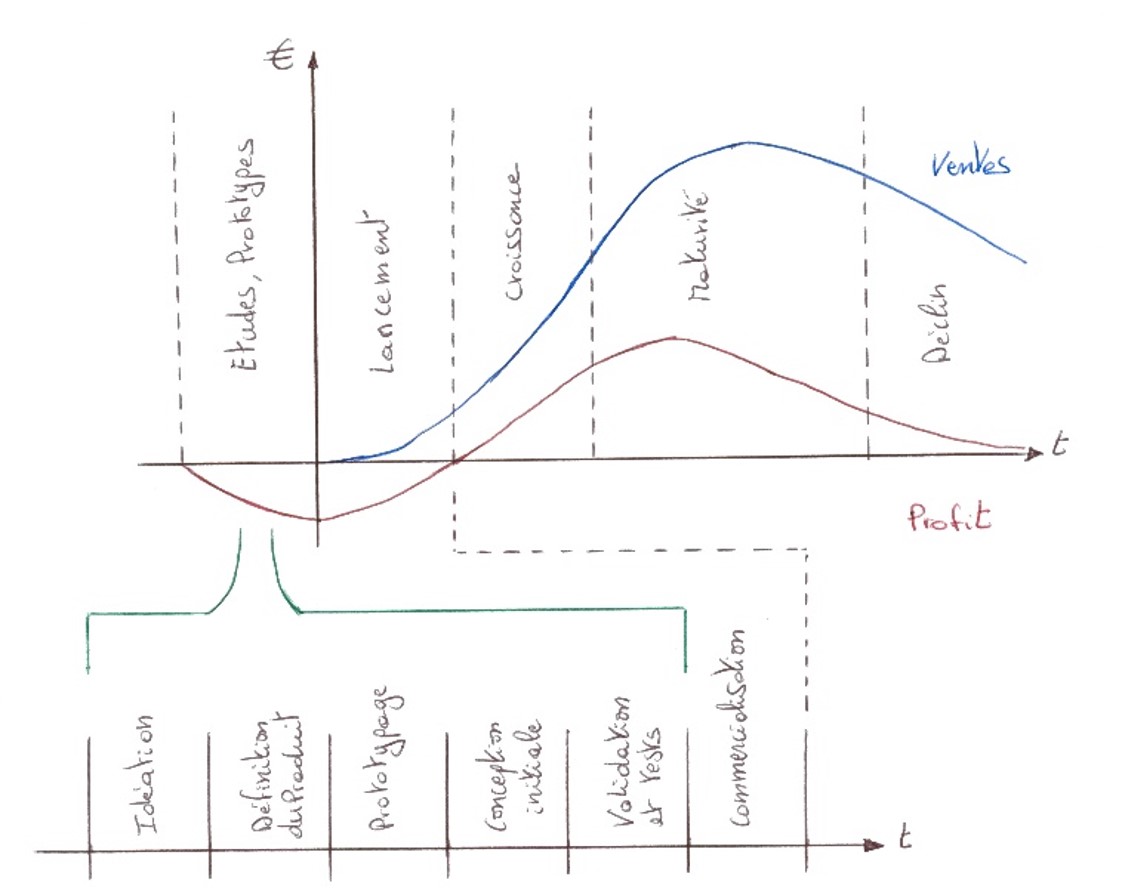Top 12 reasons why startups fail: CBInsight 03 Aug 2021
1. Ran out of cash/failed to raise new capital.
2. No market need.
3. Got outcompeted.
4. Flawed business model.
5. Regulatory/legal challenges.
6. Pricing/cost issues.
7. Not the right team.
8. Product mistimed.
9. Poor product.
10. Disharmony among team/investors.
11. Pivot gone bad.
12. Burned out/lacked passion.

MEDiVICE… accompanies you in the development of your strategy
Some theoretical reminders:
√ The development of a company involves adapting its offer to the market it is targeting.
√ The strategy of an organization is the long-term orientation of its organization.
! A company that changes the configuration of its resources is not being strategic, but is being tactical.
√ The alignment of 3 levels of strategy is crucial to its survival.
What are they? :
● The corporate strategy : e.g. Diversity of the product and service offering.
● The strategy by business areas (competitive strategy): Usually concerns positioning issues and response to competitors’ actions.
● Operational decisions.
√ Strategic choices, concern the strategic options available to an organization,
both in terms of directions and the ways in which they can be achieved.
● Competitive strategies and business models (Business Model).
● Product and service portfolio management.
● Internationalization.
● Innovation.
● Acquisitions and cooperations.


MEDiVICE … accompanies you and carries out your market study
Some theoretical reminders:
√ Market research is a methodical work of collecting and analyzing information to better know and understand a market, an offer, a public. (Source: Mercator)
√ To carry out a representative study, one can very quickly realize that it is not simple to gather information. Markets that do not yet exist are characterized by a strong lack of benchmarks, insufficient pre-existing data, and a lack of competition, making it difficult to produce analyses.
√ The nature type of study conducted depends on the of its purpose, they are of 3 types:
● Documentary market study, which are summaries made from existing known documents.
● Quantitative market study allow as for them to describe, measure, predict and test
attitudes and behaviors.
● Qualitative market study seek to understand, to explore the motivations and the needs,
of the objects of study. The main purpose of these studies is to analyze in depth a given market
√ To carry out its studies, it is also necessary to:
● Find professionals to interview.
● Contact these professionals.
● Obtaining objective opinions.
Some thoughts on the subject
√ Learning how users, the target market prescriber will perceive product given their current needs.
√ A misalignment, a “product/market” mismatch between the proposed offering and the actual market needs.
√ Experimenting with the players themselves.
√ A flawed approach: the study was conducted based on past behavior.
√ Changing the rules: an innovation is by definition new and uncertain. It will impact the market, change the rules or even create a new market.
√ Market-focused innovation:
● Market focus: who can I sell to, who has a problem to solve?
● Product focus: what am I selling, what is my value proposition?
√ Selling before producing, the acceptance and potential of your solution, product in the market can be measured well upstream, from the idea stage.


MEDiVICE … supports you throughout the development and life cycle of your product
The (classic) life cycle of a product.
1. Launch phase, low growth, gradual introduction on the market.
2. Growth , rapid penetration of the product and increasing profits.
3. Maturity, slowing down of growth, as the product is already well established. The profit reaches its maximum level, then starts to decrease because of the expenses incurred to support the product against the competition.
4. Decline, characterized by declining sales and profits.
The 6 stages of the new product development process.
1. Ideation.
2. Definition of the product by filtering steps, which allows to reduce the number of ideas according to various criteria specific to the company.
3. Prototyping, the selected ideas are used to elaborate a concept, a detailed version placed under the angle of the customers benefits.
4. Initial design, the concept is tested with a group of consumers belonging to the target market, to verify the real interest.
5. Validation and testing, development of an appropriate marketing strategy for launch. This is followed by an economic analysis that evaluates the future sales, costs and benefits of the product to determine if the sales projections are in line with the company’s objectives.
6. Commercialization, if this analysis proves successful, proceeds to product development, before possibly implementing a market test and launching.
